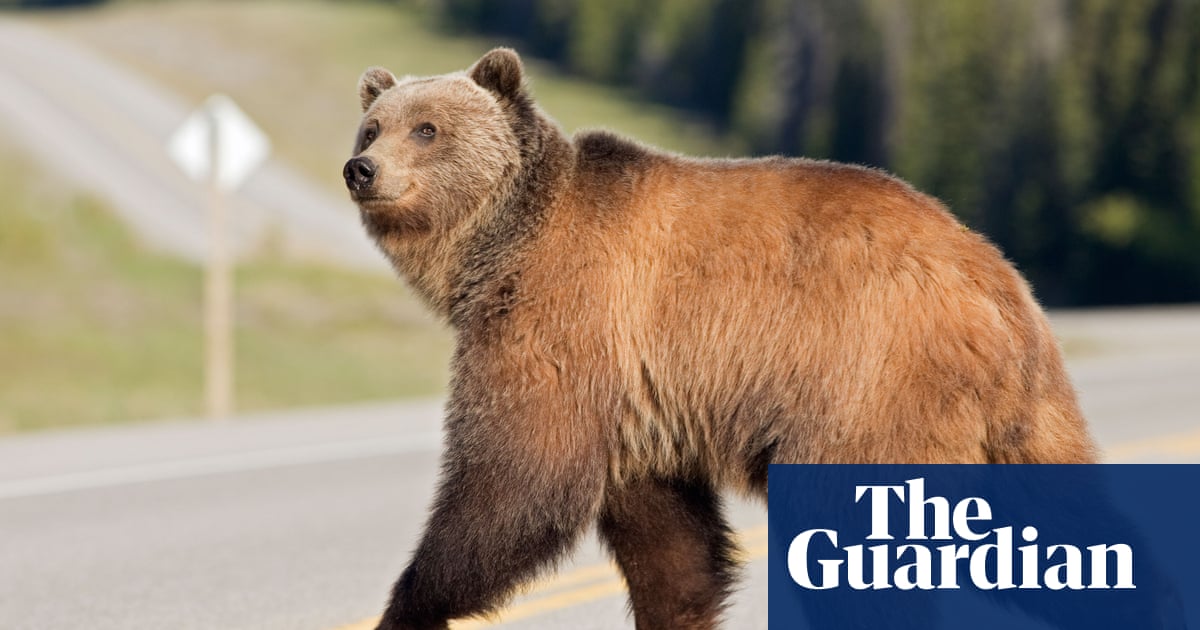Apex predators are one of several large and unpredictable animals concerning officials in foothills of Rockies
G7 summit on wildfire watch for Trumpian explosions in Canada
Security preparations for G7 summits normally involve the elite close protection afforded to world leaders, and then a series of of concentric defences against street demonstrations and protests.
Not in the Rockies.
As world leaders gather at the G7 summit in Kananaskis, organizers have also had to factor in the potential threats posed by local wildlife.
Access to Kananaskis Country, one of the region’s main springboards to the rugged foothills and front ranges of the Rockies, has been cut off to all vehicles and air traffic as political elites gather. But officials are rightly worried about the region’s large and unpredictable mammals: moose, cougars, wolves, black bears – and the six dozen grizzlies known to live in the region.
Alberta’s ministry of public safety and emergency services told the Globe and Mail it has a “comprehensive wildlife mitigation strategy” in order to corral world leaders.
The province installed miles of fencing with a “minimum height of eight feet to limit wildlife access”. In areas where animals are often spotted, electric fences have also been installed.
Most people who have spent extended time in the Rocky Mountains have come across a bear. Often, the apex mammals are far more attuned to human presence than vice versa and flee the area before any encounters. Even when startled, bears – both black and grizzly – will scamper off into the forest.
But in recent weeks, charges by a grizzly with two cubs prompted officials to close parts of Kananaskis Country. On 13 June, officials warned visitors to Ole Buck Mountain to be vigilant after a cougar was spotted. A day later, officials closed a portion of the Peter Lougheed trail after a grizzly was spotted feeding on a carcass.
A further potential complication for summit organizers is the love of golf courses shared by both the bears in the region and the US president, Donald Trump. The 600-acre course within Kananaskis Valley is known both for its rugged beauty. And in spring, when food sources in the high country are still inaccessible, open urban environments scattered throughout the wilderness draw in curious bears.
“One of the things that people sometimes forget about is what an incredible environment these golf courses are for all sorts of wildlife,” Darren Robinson, the course’s longtime general manager, told CBC News, adding that cougars and moose have also stalked the greens.
“There’s been days last summer where I literally saw, from in the clubhouse, five different bears. Some black, some grizzlies, some young, some parents. It’s beautiful.”
A tragic incident last year underscored both the persistence of grizzlies – and their vulnerability to humans. Nakoda, a famed white grizzly, easily scaled one of the wildlife fences after she was struck by a car – an injury that later proved fatal.
Her “devastating” death shook park workers, who spent “hundreds upon hundreds of hours” with her over the years, said Saundi Stevens, Parks Canada’s wildlife management specialist with the Lake Louise, Yoho and Kootenay field unit. “Just weeks ago, everyone in our office was actually celebrating her emergence from the den with two new cubs,” Stevens told reporters.
Nakoda’s death was also a stark reminder that despite the fretting over security for world leaders, the biggest risk to the region’s inhabitants will almost always be humans.
Source: www.theguardian.com
